The main attractions in Jalapão, Brazil
Atualizado em:
If you currently live or have ever lived in Brazil during this last year you’ve certainly heard of Jalapão. For those not in the know, Jalapão is a State Park located in the state of Tocantins, deep in the heart of the Brazilian continent. The park is on the rise and has attracted attention as one of the top natural destinations in the country today. I was in Jalapão in early 2018 and I can say that it lives up to its fame. Interested? So pay attention to this post about what to do in Jalpão, this charming and unforgettable place in Tocantins, Brazil.
Well, let’s start from the beginning: situating ourselves. As I’ve said before, Jalapão is a state park located in the state of Tocantins, in the northern region, and has about 34 thousand km². The region borders the states of Bahia, Maranhão, and Piauí. The most common way to get there by car from Palmas, the capital of Tocantins.
The best time to go is said to be from May to September – some even swear by August as the ideal month – because it’s the dry season, but when I was there in January, my guide said the area is good for visits all year-round. I don’t know if it was a struck of luck, but we got very hot and sunny days the whole trip, with evening rains that cooled the weather and greatly facilitated the situation of the roads, whose sands got more compacted.
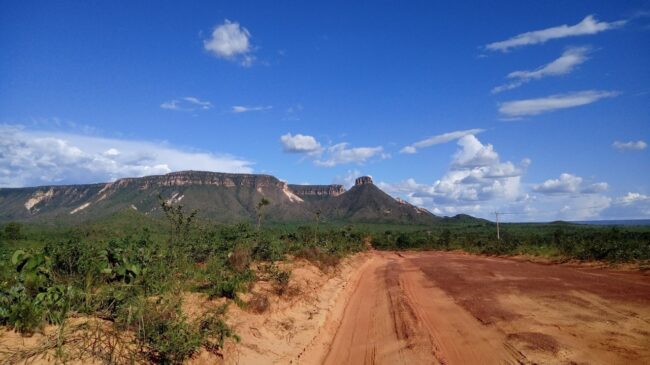
The roads become more compact during the rainy season, which makes the passage easier.
A particularity of Jalapão is that you’ll hardly have just one base, as is very common in other Brazilian destinations such as Lençóis Maranhenses and Chapada Diamantina, for example. In Jalapão the main attractions are well spread out, so you’ll travel between many small towns (and long roads) and can get to sleep one night in each place, as I did.
The main cities in the area are Mateiros, São Félix do Tocantins, and Ponte Alta do Tocantins, also known as the “Jalapão Portal”. The latter is the largest city in the region, although it’s still actually a very small town, like all the others, and Mateiros is where most of the attractions are located.
Okay, but what is there, anyway? Well, Jalapão is one of the most diverse nature destinations in Brazil. You’ll find everything from waterfalls to dunes, including springs, rivers, and hills. Listed below are the main attractions:
1- Fervedouros
The fervedouros, which can roughly be translated as “boilers” are perhaps the most famous attraction of Jalapão, and that isn’t for nothing. At first glance, they look like little ponds, always very beautiful and surrounded by woods, sometimes with flashy colors. As the visitor enters and touches his feet to the fine sand, they don’t feel the bottom and feel as if they’ll be sucked by a quicksand, but this is where the experience gets magical: the force of the water pushes us out, making it nearly impossible to submerge.

Dip in one of the Fervedouros of Jalapão
The fervedouros are springs, that is, water from groundwater sprouting from the earth and forming a small puddle. They might be just that if they weren’t located on private properties, where they gained larger dimensions with the action of the owners, who enlarged their surroundings and made them into small pools.
Access to all fervedouros is easy and paid for (the value is usually included in the tour packages). Visitors can stay up to 20 minutes inside, as only groups of 8 to 12 visitors are allowed at a time, depending on the size of the pool. As I went in the low season, I got lucky a couple of times and managed to stay inside until 1pm, as there weren’t any more people waiting to get in.
On my trip, I went to the Ceiça, Bela Vista, Alecrim (pictured above) and Buritis fervedouros, but there’re many others out there.
2- Waterfalls
There are three main waterfalls in the region. The first, Cachoeira da Roncadeira, or Roaring Waterfall, is accessed by a 1,500m trail. It’s not exactly in Jalapão itself, but in the vicinity of Palmas, in neighboring village Taquaruçu, but is usually included in the tour packages. To be quite honest, it’s not at all dazzling, and if you go to waterfalls a lot you’ll have seen many ones similar to it. The braver ones may choose to walk a little farther and go abseiling, and it’s well worth it!

Rappelling down on Cachoeira da Roncadeira
The Cachoeira da Velha, or Old Woman’s Waterfall, is yet another one of the amazing landscapes of the trip. You can’t enter it, just watch it from different angles from a platform. Depending on the time of year, you can raft these rapids and closely look at the rainbows they form.
The best of all, in my opinion, is the Cachoeira do Formiga, or Ant Waterfall. It’s small in height, but the water has a surprisingly lush color that catches the eye, especially if you compare it with the dark color that waterfalls usually have. It falls into an equally stunning lake, delightful for swims because the water isn’t freezing, as is the case with most waterfalls.
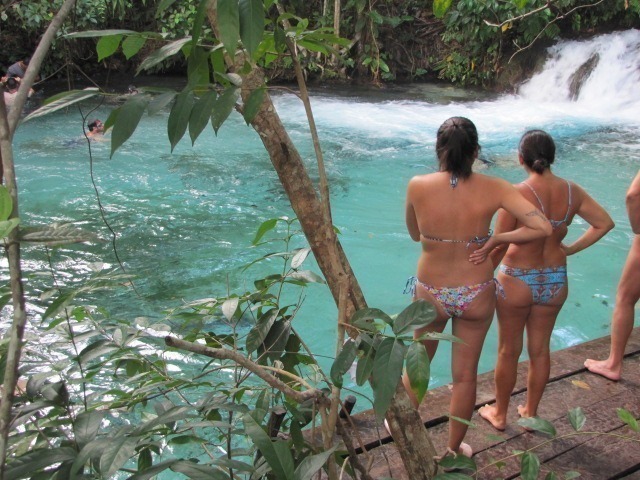
Cachoeira do Formiga, an absurdly beautiful color
3- Hills
After leaving the Cachoeira da Roncadeira waterfall, the next stop is usually the Sussuapara Canyon. Here, once more, Jalapão is different from usual, because we see the canyon from below, walking through it and gazing the hanging roots of the plants at the top. Precisely because of these plants, water droplets run down its “walls”, forming an extraordinary view.
The first day should absolutely end with the sunset view at Pedra Furada. When I went the weather was cloudy so I couldn’t enjoy the sunset much, but the stop is interesting because the rock formation has such a coloring that makes it look like a painting. Other than that, several birds “live” around there, including some macaws, and you can observe them fairly closely in their natural habitat.
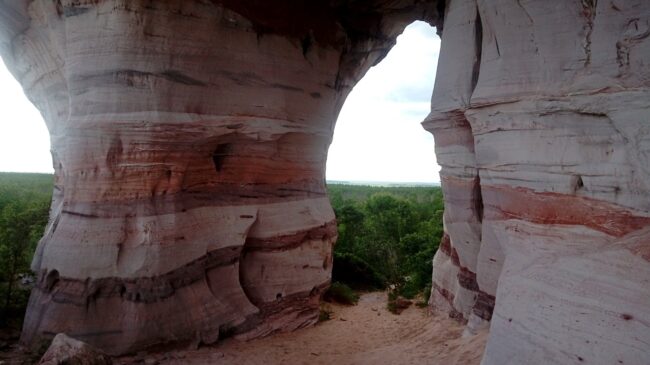
Pedra furada, or holed stone (you can kinda see why). The only thing missing is the sunset.
4- Dunes
After the fervedouros, my favorite attractions in Jalapão were its Dunes. Firstly because I’d never seen dune formations in such a faraway place from the sea, so the scenery is already quite different. Second, because the sand has a breathtaking orange tint.
Unlike what happens in Lençóis Maranhenses, another location famous for its dunes here in Brazil, there’s a predetermined path to reach the top, and it’s not allowed to get close to the edges to prevent the dunes from shifting and end up silting the stream just below. The combination of dunes, vegetation, stream and – maybe – sunset is simply wonderful!
5- River Beach
The little rio Novo beach is precisely what the name says, a river beach. With white sands and dark water with very strong currents, it’s a necessary stop in the middle of a long day in which you covered miles and miles. Lunch is usually a picnic lunch served right there. Worth the stop.
Feel like planning a trip to Jalapão, Brazil?
-“I love it! I wanna go, what now?”
Well, first of all, keep in mind that the trip to Jalapão is an expensive one. It’s practically impossible to go without buying a tour package and they’re usually all-inclusive, meaning that you won’t have to worry about anything when you get there, but you’ll have to pay the price for that.
-It’s okay, I’ve got some money saved up!
Great! So do a lot of research, talk to the agencies (there are many to choose from like Kerala, Buriti, Cerrado Dourado, etc) and choose the itinerary and package that suits you best. Don’t forget to pack your sunscreen, repellent, sickness medicine and check my tips of what you need to know before going to Jalapão.
Other than that, you’re all set to enjoy!
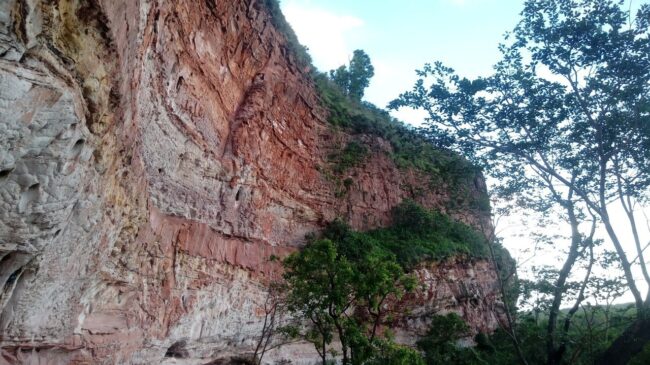
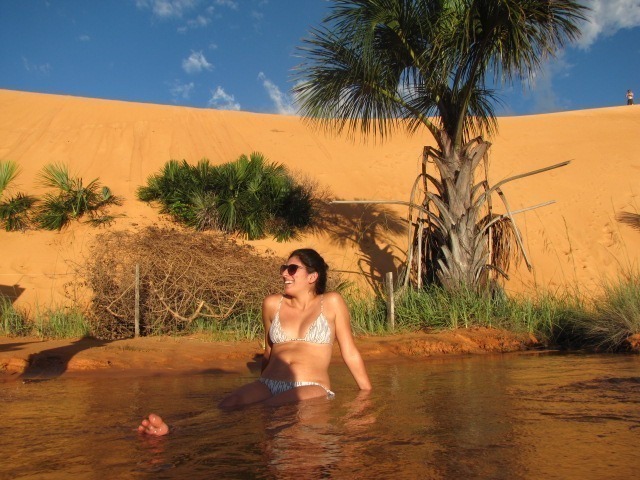
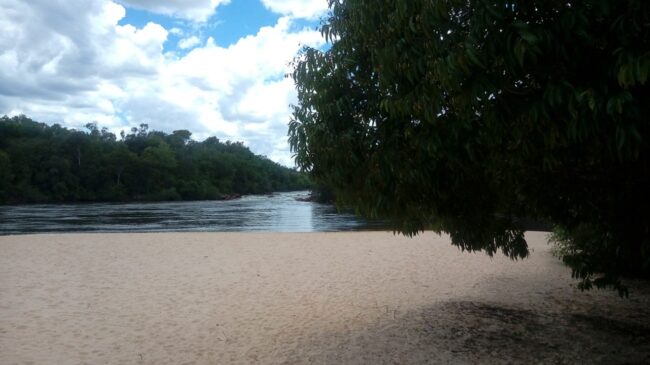






Deixe seu comentário